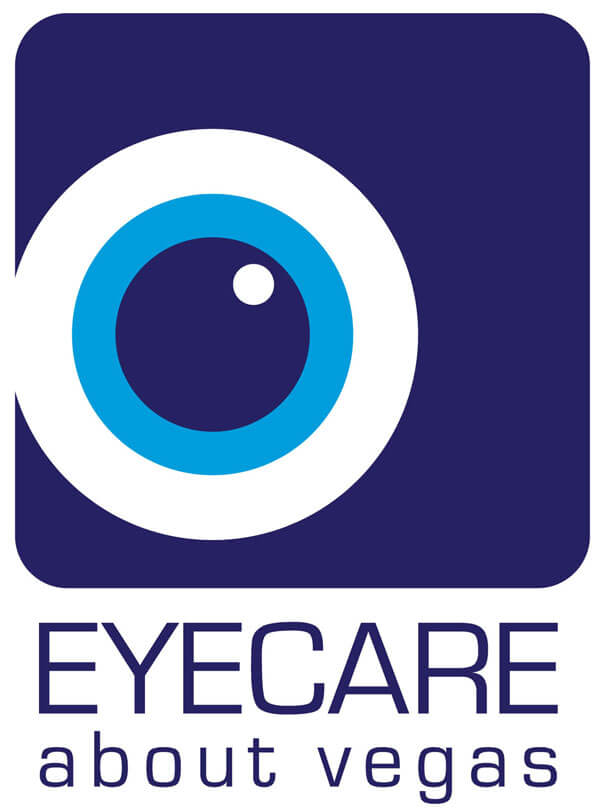 If you've been diagnosed with keratoconus, our Las Vegas eye doctors understand your challenge and are here to help you see clearly and comfortably.
If you've been diagnosed with keratoconus, our Las Vegas eye doctors understand your challenge and are here to help you see clearly and comfortably.
Below are some of the most commonly asked questions to help you gain a better understanding of what keratoconus is and how it can be treated.
What is Keratoconus?
Keratoconus affects about 1 in every 2,000 people. This progressive eye disease impacts the shape of the cornea, weakening it and causing it to thin and bulge outward into a cone shape.
The cornea is the clear, dome-shaped outer covering of the eye. It’s responsible for focusing incoming light onto the retina at the back of the eye to enable clear vision. So, when keratoconus develops, the change in the cornea’s shape directly impacts the way light is focused.
Keratoconus often results in nearsightedness and high levels of astigmatism — two refractive errors that cause blurry and distorted vision.
If left untreated, keratoconus can lead to permanent corneal damage and even loss of vision.
What Typically Causes Keratoconus?
Keratoconus develops when the collagen fibers that support the cornea begin to weaken. While having a family member with the disease is a significant risk factor, the following conditions can also lead to keratoconus:
- Eye trauma
- Eye allergies
- Excessive eye rubbing
- Certain eye diseases
- Marfan syndrome
- Ehlers-Danlos syndrome
- Down syndrome
- Osteogenesis imperfecta
- Addison’s disease
- Leber’s congenital amaurosis
The Signs & Symptoms of Keratoconus
The symptoms of keratoconus include:
- Blurry vision
- Distorted vision, with straight lines appearing bent or wavy
- Sensitivity to bright light and glare
- Red and irritated eyes
- Increasing difficulty wearing standard contact lenses
Keratoconus tends to be initially detected in teens or young adults in their 20s, but symptoms can develop at any age.
Keratoconus symptoms usually start out mild but grow progressively worse over time — often over a decade or two — until the condition plateaus.
Both eyes are usually affected, and it’s common to have a difference in optical prescriptions between each eye.
Can Keratoconus Cause Vision Loss?
Keratoconus progression causes nearsightedness, astigmatism and visual distortions to worsen.
Eventually, corneal swelling can lead to scarring of the corneal tissue, which diminishes its transparency and increases your risk of vision loss.
Early detection and treatment of this condition are therefore critical for preventing permanent vision loss.
Can Keratoconus Be Corrected?
Initially, blurry and distorted vision can be corrected with custom-fit soft contact lenses or eyeglasses. However, as the condition progresses and your cornea becomes increasingly cone-shaped, these standard methods of vision correction become less effective.
At this point, many patients with mild to moderate keratoconus opt for scleral lenses, an effective, non-surgical method of achieving clear vision.
Severe keratoconus may require a corneal transplant procedure to replace your damaged cornea with a healthy donor cornea.
Scleral Lenses for Keratoconus
Custom designed scleral lenses help patients with corneal irregularities achieve dramatic improvements in visual acuity and comfort. Scleral lenses vault over the cornea and rest on the sclera while avoiding the diseased cornea. This creates a new optical surface instead of the damaged cornea and prevents discomfort by resting on the sclera of the eye. Moreover, the reservoir of pure saline solution between the back surface of the lens and the front of the cornea ensures that the eye is always in a liquid environment – making it optimal for healing.
Don’t let keratoconus impact your quality of life. We can help you achieve clear, comfortable vision with scleral contact lenses.
If you or a loved one has been diagnosed with keratoconus, call Scleral Lens and Keratoconus Center at EyeCare About Vegas today to schedule a scleral lens consultation.
Our practice serves patients from Las Vegas, Henderson, Green Valley, and Seven Hills, Nevada and surrounding communities.
Q: What Are the Advantages of Wearing Scleral Lenses?
A: Below are the main benefits of wearing scleral lenses:
- Scleral lenses are made of high-quality materials, which means they'll last for the long haul.
- Their large [size] enables them to stay centered and stable on your eye.
- The vaulted lens holds hydrating saline solution which creates optimal conditions for ultimate comfort and healing of dry eyes.
- Because the scleral lenses cover more surface of the eye than traditional lenses, they also help shield the eyes from external irritants.
Q: Are scleral lenses covered by insurance?
A: When it comes to scleral lenses, every insurance company is different. We recommend contacting us or checking with your insurance provider to find out if scleral lenses are covered under your plan.
